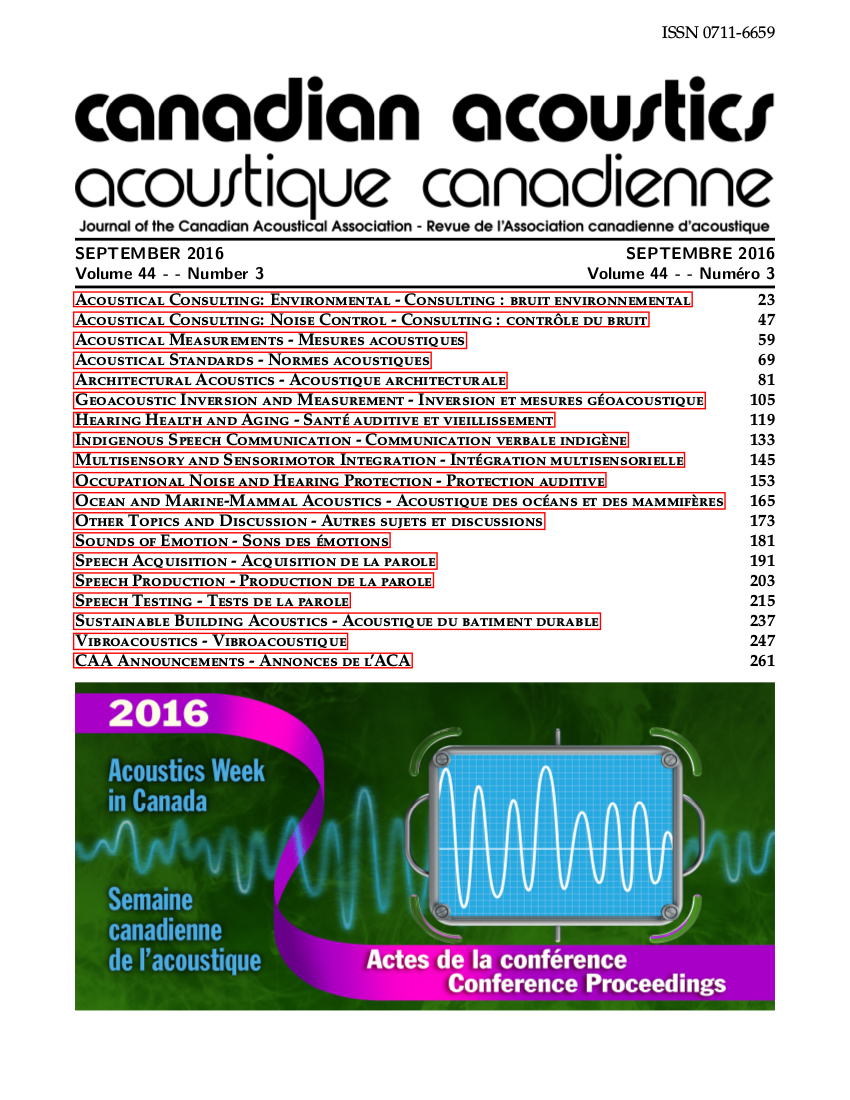An automated real-time vessel sound measurement system for calculating monopole source levels using a modified version of ANSI/ASA S12.64-2009
Résumé
Assessments of the effects of shipping noise on marine fauna often use acoustic propagation models to predict levels of sound exposure. These models require accurate vessel sound emission source levels. American National Standards Institute (ANSI) standard S12.64-2009 (reaffirmed in 2014) describes procedures for measuring underwater sound from ships. The standard deals with radiated noise level (RNL) source levels that assume 20 log(r) transmission loss (TL) between the vessel positions and the measurement hydrophones. That approach does not account for interference from surface and seabed reflections. Most acoustic models directly account for these effects, and therefore require monopole source levels (MSL) instead of RNL. MSL assumes all acoustic energy originates at a single point in the water, at a specified depth.
An automated vessel source level measurement system is currently deployed along the in-bound shipping lane into Vancouver, BC. This system calculates RNL using the method of S12.64-2009 and MSL using a modified approach that predicts TL using a frequency-dependent acoustic model. As a large fraction of vessel sounds originate from propeller cavitation, the model incorporates a source depth distribution derived from specified or estimated propeller shaft depth and propeller diameter. Vessel sounds are measured by calibrated arrays of GeoSpectrum M36-100 hydrophones sampled at 64 kHz (24-bit) by JASCO AMAR recorders and streamed to shore through Ocean Network Canada’s VENUS underwater observatory network. Passing vessels are tracked acoustically and by a dedicated vessel Automatic Identification System (AIS). An on-shore processing system performs vessel tracking, data windowing, and spectral analysis as described by S12.64-2009. RNL measurements are performed according to the standard’s Grade-A signal processing protocol, but with Grade-C measurement geometry.
This presentation discusses the modifications of S12.64-2009 required to calculate MSL. We describe the automated measurement system and present and compare RNL and MSL measurements obtained by it.
Fichiers supplémentaires
Publié-e
Comment citer
Numéro
Rubrique
Licence
Author Licensing Addendum
This Licensing Addendum ("Addendum") is entered into between the undersigned Author(s) and Canadian Acoustics journal published by the Canadian Acoustical Association (hereinafter referred to as the "Publisher"). The Author(s) and the Publisher agree as follows:
-
Retained Rights: The Author(s) retain(s) the following rights:
- The right to reproduce, distribute, and publicly display the Work on the Author's personal website or the website of the Author's institution.
- The right to use the Work in the Author's teaching activities and presentations.
- The right to include the Work in a compilation for the Author's personal use, not for sale.
-
Grant of License: The Author(s) grant(s) to the Publisher a worldwide exclusive license to publish, reproduce, distribute, and display the Work in Canadian Acoustics and any other formats and media deemed appropriate by the Publisher.
-
Attribution: The Publisher agrees to include proper attribution to the Author(s) in all publications and reproductions of the Work.
-
No Conflict: This Addendum is intended to be in harmony with, and not in conflict with, the terms and conditions of the original agreement entered into between the Author(s) and the Publisher.
-
Copyright Clause: Copyright on articles is held by the Author(s). The corresponding Author has the right to grant on behalf of all Authors and does grant on behalf of all Authors, a worldwide exclusive license to the Publisher and its licensees in perpetuity, in all forms, formats, and media (whether known now or created in the future), including but not limited to the rights to publish, reproduce, distribute, display, store, translate, create adaptations, reprints, include within collections, and create summaries, extracts, and/or abstracts of the Contribution.


